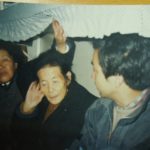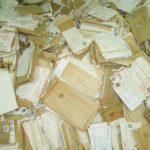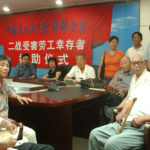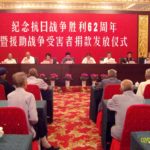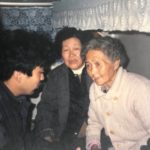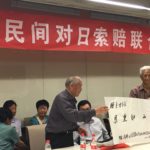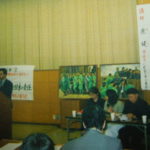- Home
- FORM LETTER
FORM LETTER
As discussed in the “Home” page, the objective of this website is to provide a digital archive of the thousands of letters and form letters that Mr. Tong Zeng received in the first part of the 1990 decade from ordinary Chinese citizens who were victims of Japanese atrocities during the Second Sino-Japanese War (1931-1945). For a description of the letters and the process we develop to identify and describe the letters, please see the “Letters” page.
Also, as explained in the “Letters” page, by the 1990s, since most of the victims were already senior citizens and many of them are not well educated, to facilitate the documentation of their experience, some people developed “form letter template” to make it easier for such victims to document their experience.
We now describe the form letters. Note, however, in this first release of this website, no form letters have been included.
Instead of needing to write a letter from scratch, the form letter template provides placeholders for various fields for a victim or his/her representative to record various items of relevant information.
For each form letter, we have the following documents:
- Scanned image of each page of the original form letter written in Simplified Chinese. This is an electronic photo copy of each page of the form letter. It is a .jpg file.
- Digital file of the transcribed form letter in Simplified Chinese. This is a manual transcription of the Simplified Chinese letter. It provides a digital file that can allow searches. It is a .doc file. Because the original form letters were handwritten on mostly thin papers, using Optical Character Recognition (OCR) to automatically transform the scanned image files into digital files does not capture the contents accurately enough.
- Digital file of the transcribed Chinese letter using Traditional Chinese. This is just a machine conversion (with manual review and changes as necessary) of the Simplified Chinese form letter file into a Traditional Chinese form letter file. It is a .doc file.
- Digital file of the English translation of the original Chinese form letter. This is a translation of the Simplified Chinese form letter into English by a bilingual person. It is a .doc file.
So each form letter has a set of documents associated with that form letter.
For each scanned document, we assign it a unique identifier ID. For example, for the scanned image of the first form letter, its ID is sc01. The letters “sc” denotes that this is a scanned document of a form letter. Only two digits after the letter “sc” are necessary because there are less than 20 localities that had form letters, although each of these localities could have many dozens of pages for each form letter, because a page in a form letter is usually associated with a separate victim or a separate group of victims in that same locality.
For the scanned image of the pages of the first form letter, its ID is sc01-p001, sc01-p002, sc01-p003, etc. to denote the first page, second page, third page, etc. of the first form letter.
For the transcribed Simplified Chinese version of the first form letter, its ID is sc01s, with the second “s” denoting that this is a transcribed Simplified Chinese file. Because the transcribed file is for the whole form letter, and not for individual pages of the form letter, it is not necessary to introduce page number in the ID of the transcribed letter.
For the transcribed Traditional Chinese first form letter, its ID is sc01t, with the letter “t” denoting Traditional Chinese.
For the English translation of the first Chinese form letter, its ID is sc01g, with the letter “g” denoting English.
So there are multiple documents associated with each form letter. We use the ID sc01 to denote the folder that contains the whole set of documents associated with the first form letter.
The naming convention and unique identifiers for the first form letter are summarized in the following table (for the naming convention and unique identifiers for any other form letter, just replace sc01 with the unique ID of that other form letter):
| Type of Document | Unique ID | Type of File |
| Scanned Chinese Form Letter | sc01-p001, sc01-p002, sc01-p003, etc. | .jpg |
| Digital Transcribed Simplified Chinese Form Letter | sc01s | .doc |
| Digital Transcribed Traditional Chinese Form Letter | sc01t | .doc |
| Digital Translated English Form Letter | sc01g | .doc |
| Folder containing the whole set of documents associated with the first Form Letter | sc01 | Folder |
Table: Unique identifiers to denote various documents for the first form letter sc01
Every letter contains the following information:
- Type of atrocity (We classify the atrocities into nine types: Slave Laborers (SL), Murders (MU, not part of Nanking Massacre or Other Massacres), Air Bombings (AB), Rapes (RA, not part of Sex Slaves), Other Massacres (OM), Biological/Chemical Warfare (BC), Sex Slaves (SS), Nanking Massacre (NM) and Others (OT). It is possible that an event is associated with more than one category. For example, an event involving a woman being raped and then killed would be classified under both RA and MU.)
- Date of event
- Name(s) of victim(s)
- Location of event
- Date of letter
- Name of author
- Address of author
- Other details (information such as the number of people killed, raped, or injured, amount of property damaged, etc.
Besides these eight pieces of information, each form letter as already discussed also has a unique ID(also called sequence number) that identifies the folder containing all the documents associated with that form letter. Therefore, each form letter can be characterized by an equivalent “Index File” spreadsheet with nine indices. This spreadsheet Excel file with its indices is used to facilitate the searching of the contents of the form letters, as explained and can be tried in the “Search” page (once we have included form letters in a future release of this website).
In that future release, we will provide several sample form letters.




